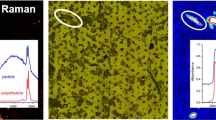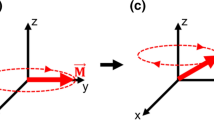Abstract
The chemical characterization of dissolved organic matter (DOM) is critical for understanding carbon sequestration processes in soils. This work evaluated the use of electrospray ionization in both negative ion mode (ESI−) and positive ion mode (ESI+) for the characterization of DOM extracted from nine terrestrial sources using Fourier transform ion cyclotron mass spectrometry (FT-ICR-MS). The compositing of the peaks from ESI− to ESI+ modes increased the total assigned formulas from 23 to 63 % as compared to the traditional use of ESI− alone for DOM characterization. In general, there was a preferential increase in the number of assignments for the aliphatic and carbohydrate-like DOM components in the ESI+ mode. The soil-extracted DOM specifically exhibited greater increases in the aliphatic and carbohydrate-like DOM components with the combined use of ESI− and ESI+ modes likely due to the greater presence of aromatic DOM molecules that suppressed the ionization of these entities in ESI− mode. On the basis of these findings, we show that improved characterization of DOM is possible through the combined use of ESI− and ESI+ modes for FT-ICR-MS analysis, especially for samples rich in condensed aromatic and aromatic molecules.




Similar content being viewed by others
References
Scharlemann JP, Tanner EV, Hiederer R, Kapos V. Global soil carbon: understanding and managing the largest terrestrial carbon pool. Carbon Manag. 2014;5:81–91.
Zsolnay A. Dissolved organic matter: artefacts, definitions, and functions. Geoderma. 2003;113:187–209.
Fritsch E, Allard TH, Benedetti MF, Bardy M, do Nascimento NR, Li Y, et al. Organic complexation and translocation of ferric iron in podzols of the Negro River watershed. Separation of secondary Fe species from Al species. Geochim Cosmochim Acta. 2009;73:1813–25.
Strahm BD, Harrison RB, Terry TA, Harrington TB, Adams AB, Footen PW. Changes in dissolved organic matter with depth suggest the potential for postharvest organic matter retention to increase subsurface soil carbon pools. For Ecol Manag. 2009;258:2347–52.
Guppy CN, Menzies NW, Moody PW, Blamey FPC. Competitive sorption reactions between phosphorus and organic matter in soil: a review. Aust J Soil Res. 2005;43:189–202.
Leenheer JA, Croué JP. Characterizing aquatic dissolved organic matter. Environ Sci Technol. 2003;37:18A–26A.
Nebbioso A, Piccolo A. Molecular characterization of dissolved organic matter (DOM): a critical review. Anal Bioanal Chem. 2013;405:109–24.
Sleighter RL, Hatcher PG. The application of electrospray ionization coupled to ultrahigh resolution mass spectrometry for the molecular characterization of natural organic matter. J Mass Spectrom. 2007;42:559–74.
Stevenson FJ, Cole MA. Cycles of soil: carbon, nitrogen, phosphorus, sulfur, micronutrients. 2nd ed. New York: Wiley; 1999.
Antony R, Grannas AM, Willoughby AS, Sleighter RL, Thamban M, Hatcher PG. Origin and sources of dissolved organic matter in snow on the east Antarctic ice sheet. Environ Sci Technol. 2014;48:6151–9.
Gonsior M, Peake BM, Cooper WT, Podgorski DC, D’Andrilli J, Dittmar T, et al. Characterization of dissolved organic matter across the subtropical convergence off the South Island, New Zealand. Mar Chem. 2011;123:99–110.
Li Y, Xu C, Chung KH, Shi Q. Molecular characterization of dissolved organic matter and its subfractions in refinery process water by Fourier transform ion cyclotron resonance mass spectrometry. Energy Fuels. 2015;29:2923–30.
Lin P, Rincon AG, Kalberer M, Yu JZ. Elemental composition of HULIS in the Pearl River Delta region, China: results inferred from positive and negative electrospray high resolution mass spectrometric data. Environ Sci Technol. 2012;46:7454–62.
Fernandez IJ, Norton SA, Kahl JS, Cosby BJ. Experimental acidification causes soil base-cation depletion at the Bear Brook Watershed in Maine. Soil Sci Soc Am J. 2003;67:1909–19.
Dittmar T, Koch B, Hertkorn N, Kattner G. A simple and efficient method for the solid-phase extraction of dissolved organic matter (SPE-DOM) from seawater. Limnol Oceanogr Methods. 2008;6:230–5.
Stubbins A, Spencer RGM, Chen H, Hatcher PG, Mopper K, Hernes PJ, et al. Illuminated darkness: molecular signatures of Congo River dissolved organic matter and its photochemical alteration as revealed by ultrahigh precision mass spectrometry. Limnol Oceanogr. 2010;55:1467–77.
Ohno T, Ohno PE. Influence of heteroatom pre-selection on the molecular formula assignment of soil organic matter components determined by ultrahigh resolution mass spectrometry. Anal Bioanal Chem. 2013;405:3299–306.
Seidel M, Beck M, Riedel T, Waska H, Suryaputra IGNA, Schnetger B, et al. Biogeochemistry of dissolved organic matter in an anoxic intertidal creek bank. Geochim Cosmochim Acta. 2014;140:418–34.
Tfaily MM, Chu RK, Tolic N, Roscioli KM, Anderton CR, Pasa-Tolic L, et al. Advanced solvent based methods for molecular characterization of soil organic matter by high-resolution mass spectrometry. Anal Chem. 2015;87:5206–15.
Tang K, Page JS, Smith RD. Charge competition and the linear dynamic range of detection in electrospray ionization mass spectrometry. J Am Soc Mass Spectrom. 2004;15:1416–23.
Kramer MG, Sanderman J, Chadwick OA, Chorover J, Vitousek PM. Long-term carbon storage through retention of dissolved aromatic acids by reactive particles in soil. Glob Chang Biol. 2012;18:2594–605.
Acknowledgments
This project was supported by USDA-NIFA-AFRI 2013-67019-21368 and the Maine Agricultural and Forest Experiment Station Hatch Project ME0-H-1-00472-11. This is Maine Agricultural and Forest Experiment Station Journal no. 3464.
Author information
Authors and Affiliations
Corresponding author
Ethics declarations
Conflict of interest
The authors declare that they have no competing interests.
Rights and permissions
About this article
Cite this article
Ohno, T., Sleighter, R.L. & Hatcher, P.G. Comparative study of organic matter chemical characterization using negative and positive mode electrospray ionization ultrahigh-resolution mass spectrometry. Anal Bioanal Chem 408, 2497–2504 (2016). https://doi.org/10.1007/s00216-016-9346-x
Received:
Accepted:
Published:
Issue Date:
DOI: https://doi.org/10.1007/s00216-016-9346-x




